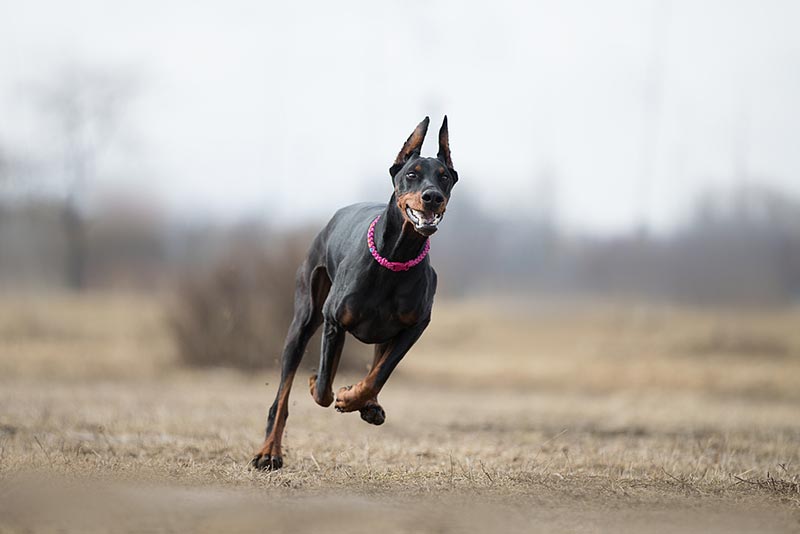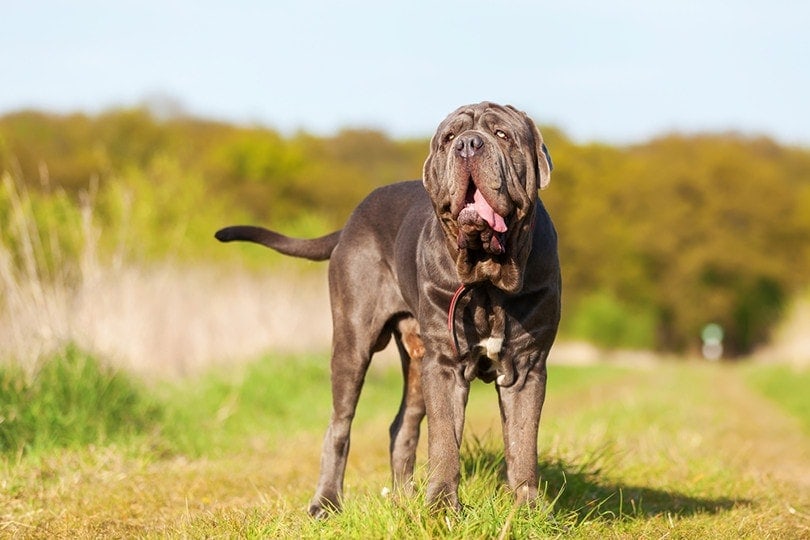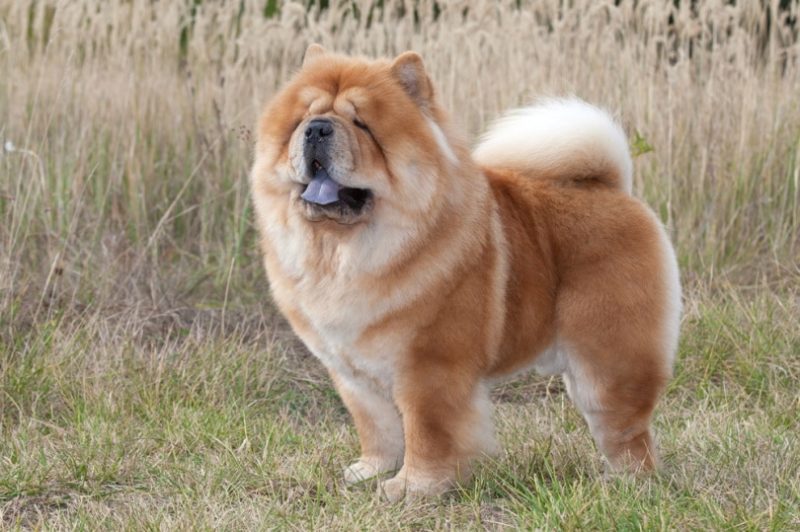10 Types of Plants Resistant to Dog Urine (with Pictures)

Updated on
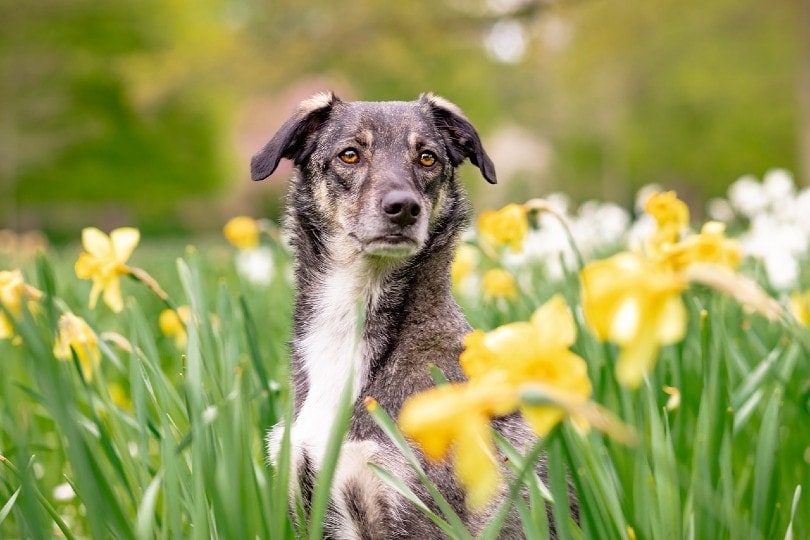
A dog and a gorgeous landscape don’t often go together. Dogs run, dig, and pee in gardens and on the lawn. Aside from being unsightly on plants, dog urine can soak into the ground and burn plant roots, killing them and ruining your garden.
Fortunately, some plants are resistant to dog urine! Thanks to these urine-resistant plants, a beautiful garden can be yours even if you have a dog. First, we look at six decorative plants and shrubs that will beautify your landscape, then at four vegetable and herb plants that can survive dog urine and still give you a plentiful harvest. Let’s get started!
Top 6 Dog Pee-Resistant Decorative Plants & Shrubs
1. Snow in Summer
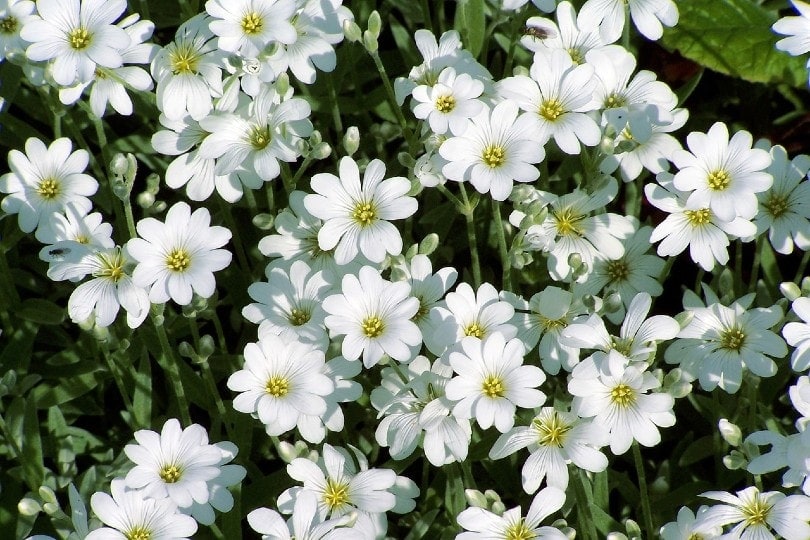
| USDA Hardiness Region | 3–7 |
| Sun | Full sun |
| Soil | Dry, well-draining, sandy |
Snow in Summer plants are perennial flowers resembling fresh snowfall. The plants are great for ground cover and are often used in rock gardens. They can fill in pockets in stone walls and between flowers.
Snow in Summer blooms in early summer and can spread rapidly. Ample space should be placed between each one to avoid crowding. This plant does best in dry, cool areas and won’t survive long in hot, humid climates.
- Produces beautiful flowers
- Adaptive to most well-draining soils
- Tolerant of short periods of drought
- Can be invasive
- Requires full sun to avoid fungal problems
2. Burkwood Osmanthus
| USDA Hardiness Region | 6–8 |
| Sun | Full sun, partial shade |
| Soil | Occasionally wet, alkaline |
Burkwood Osmanthus is an evergreen shrub that can reach 6–10 feet tall. These plants are often used as hedges and belong to the same family as the olive tree. In addition to being resistant to dog pee, the Burkwood Osmanthus also does well against damage from deer.
If desired, these plants can be grown into small trees. They produce small, white, fragrant flowers that bloom heavily from April until the end of May.
- Low maintenance
- Winter hardy
- Requires little pruning
- Does not tolerate wind
- Always needs direct sunlight
3. Silver Carpet
| USDA Hardiness Region | 9–11 |
| Sun | Full or partial sun |
| Soil | Sand, well-draining, alkaline |
Silver Carpet is a ground-covering plant with mats of grayish-green leaves that have white, fuzzy undersides, which give the plant a silver appearance. The plant produces flowers in the summer that are loved by bees.
Silver Carpet is often used as a lawn replacement in warm climates. It can withstand light foot traffic from people and dogs. After the first 6 months, it’s drought tolerant but will require watering in hot, dry weather.
- Requires no pruning
- Hardy
- May attract gophers and slugs
- Slow growing
4. Elfin Creeping Thyme
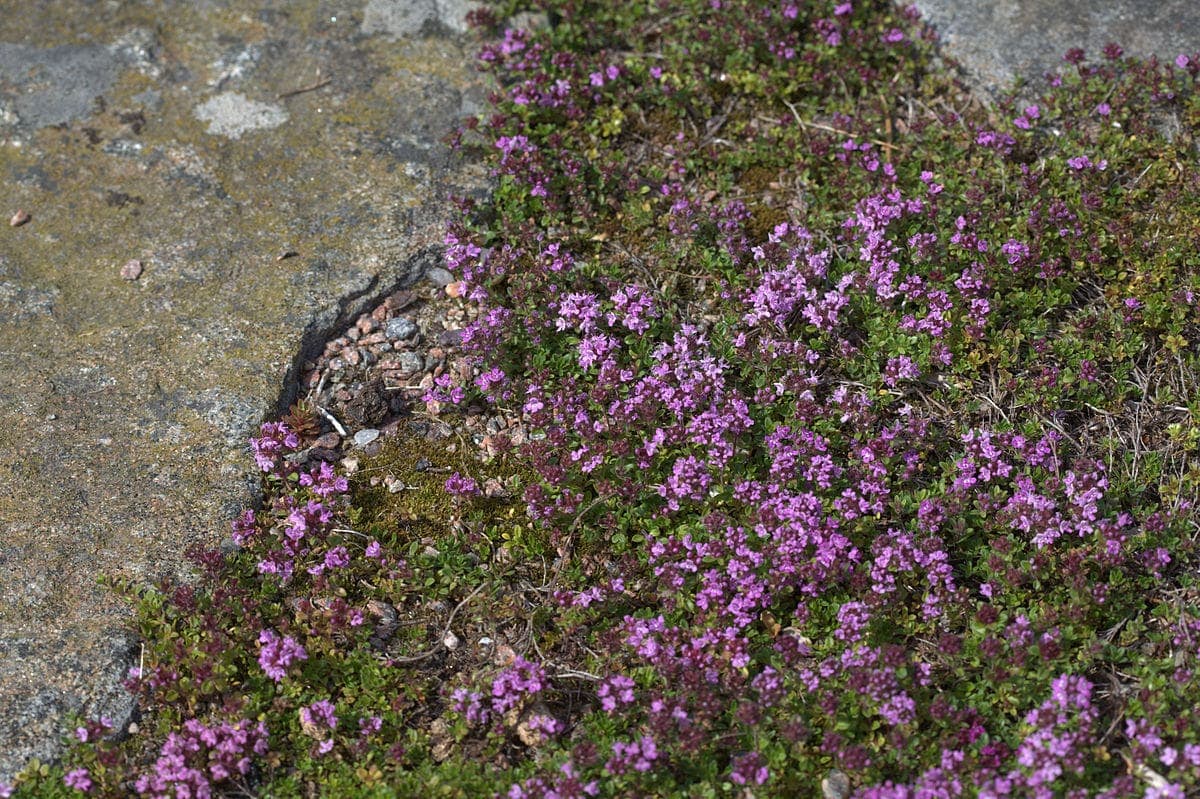
| USDA Hardiness Region | 4–9 |
| Sun | Full sun |
| Soil | Well-draining, sandy |
Elfin Creeping Thyme is used as ground cover and is made of tight cushions of small, rounded, grayish-green leaves. It reaches a low height and produces purple and pink blossoms rich in nectar. These fragrant, urine-tolerant flowers also attract butterflies.
This plant is popular because it’s resistant to heavy foot traffic, drought, extreme heat, deer, rabbits, and disease. In colder climates, the leaves will shed. Elfin Creeping Thyme requires pruning to keep it tidy.
- Not easily damaged
- Fast growth rate
- Provides an abundance of colorful blooms
- Susceptible to root rot in soggy conditions
5. Mexican Sage
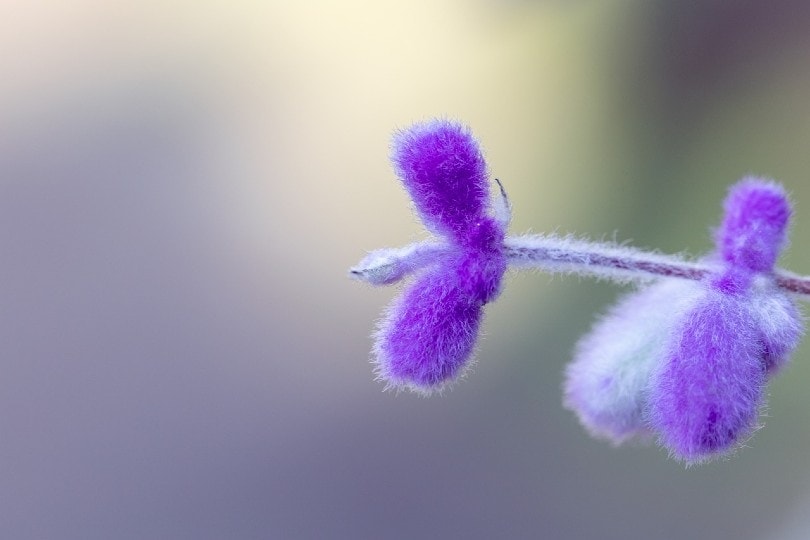
| USDA Hardiness Region | 8–10 |
| Sun | Full sun or partial sun |
| Soil | Moist, well-draining |
The Mexican Sage bush is an ornamental, low-maintenance plant that adds beauty to any garden. It should be placed in sunny locations since the shade will prevent it from getting as lush as possible. The plant has grayish-green leaves with fuzzy white undersides.
Mexican Sage is a late bloomer, thriving at the end of summer and early fall. It does best in warm climates because it is prone to freezing. Depending on the type of Mexican Sage plant that you get, it will produce velvety purple, pink, or white flowers.
In cold climates, the plants can be propagated by cuttings taken in late summer and kept in pots indoors during cold months.
- Produces beautiful blooms
- Low maintenance
- Intolerant of cold weather
- Prone to pest problems
6. Holly Fern
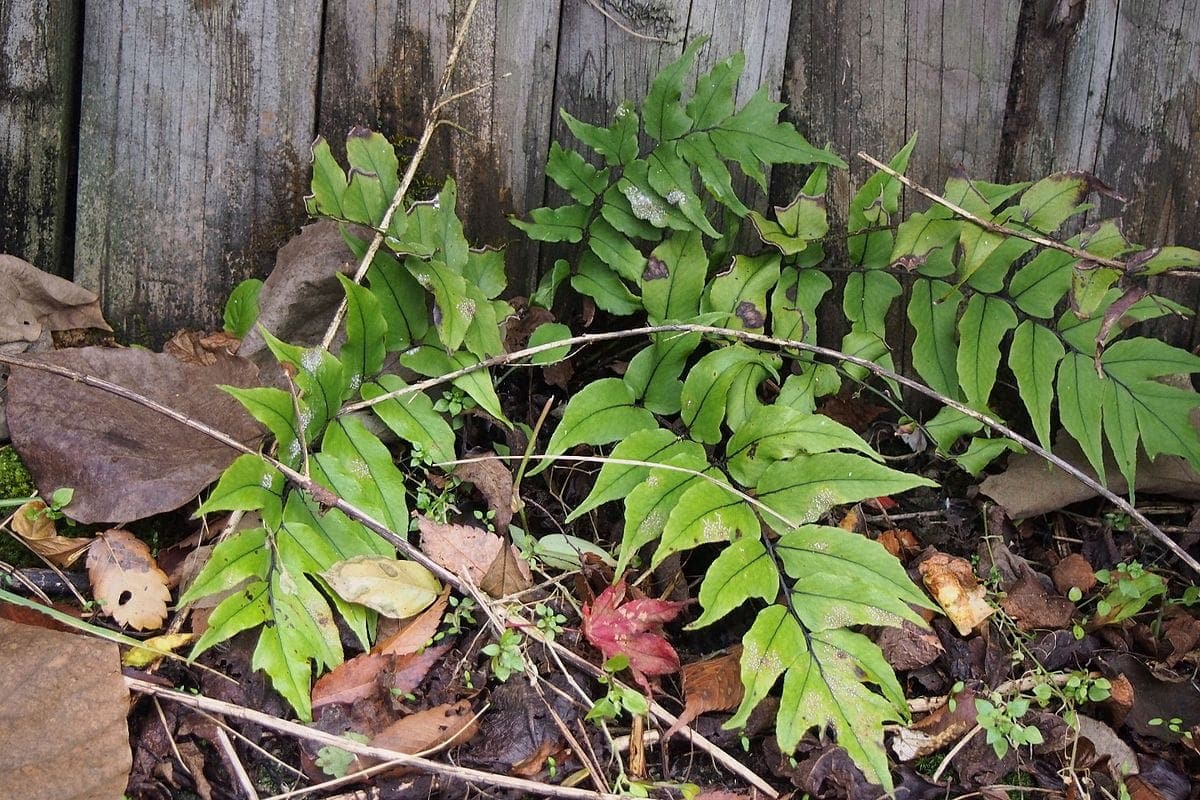
| USDA Hardiness Region | 3–9 |
| Sun | Partial sun, shade |
| Soil | Moist, woodland |
The Holly Fern, or Japanese Holly Fern, does well in shady spots and can beautifully fill in the darker areas of your landscape. It has dark green fronds that can reach up to 3 feet tall. These plants can be used to border areas of your garden that hold plants that aren’t urine-resistant.
Holly Ferns thrive in moist soil, and mulch should be used on top of the soil and around the plant to prevent moisture loss. This plant also does well in containers, adding depth and fullness to container groupings in shaded areas.
- Shade tolerant
- Evergreen leaves stay green throughout winter
- Can be sunburned
- Does not tolerate deep freezes
Top 4 Dog Pee-Resistant Vegetables and Herbs:
7. Tomato
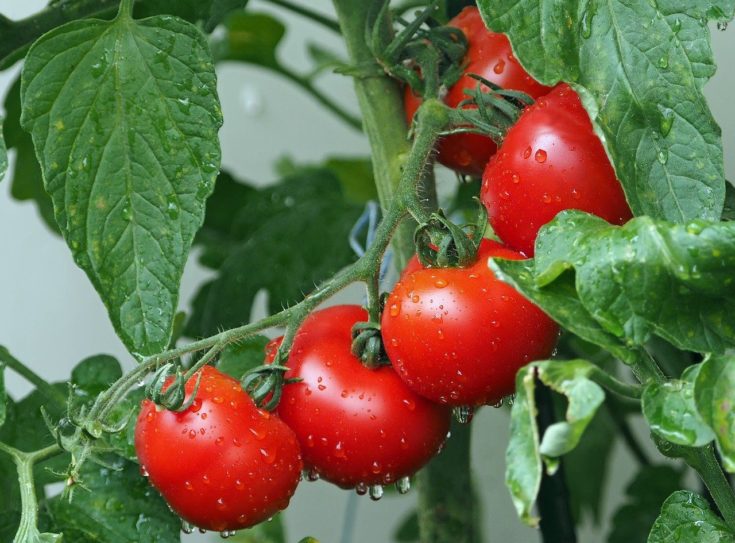
| USDA Hardiness Region | 5–8 |
| Sun | Full sun |
| Soil | Well-draining, organic matter |
Tomatoes are easy to grow in any region and can be grown in pots if you don’t have access to a garden area. They need well-draining, nutrient-rich soil. Dog urine may burn the leaves but won’t kill the plant. The tomatoes are safe to eat if they are washed thoroughly first.
Tomatoes need consistent watering. They also need calcium from their soil, or they could wind up with blossom end rot.
- Easy to grow
- Can be grown in pots
- Won’t grow fruit in extreme heat
- Can get blossom end rot
8. Basil
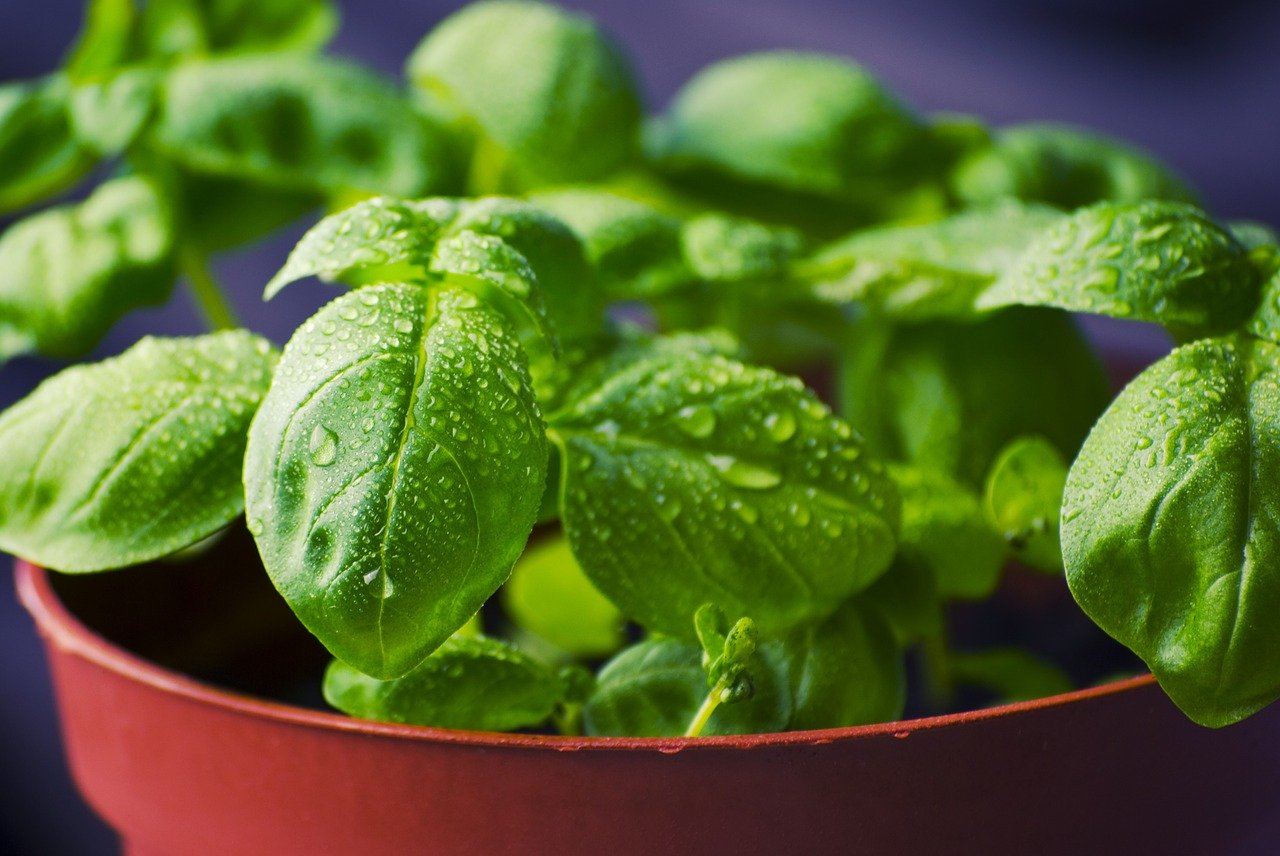
| USDA Hardiness Region | 9–11 |
| Sun | Full sun |
| Soil | Well-draining, acidic |
Basil is an herb garden favorite because it’s easy to grow and can be used in the kitchen. Basil grows best outdoors in the ground but can also be kept in containers indoors or out.
Regular pruning is necessary to keep the plants full. This herb is cold-tolerant but does not do well in temperatures below freezing. While the plant may live, it can be damaged by the frigid temperatures.
- Easy to grow
- Versatile kitchen staple
- Can be grown indoors
- Intolerant of freezing weather
- Must be pruned regularly
9. Oregano

| USDA Hardiness Region | 4–10 |
| Sun | Full sun, partial shade |
| Soil | Dry to medium moisture, well-draining |
Oregano is a Mediterranean herb that grows best in moist, well-draining soil. It can do well in areas of your garden with poor soil quality that isn’t ideal for other plants. It should only be watered once the soil is dry to the touch. Overwatering can damage or kill the plant.
This is a perennial herb but may need winter protection. It should be covered with evergreen boughs to protect it from cold wind.
- Can be grown in empty garden areas
- Good companion plant
- Doesn’t require consistent watering
- Requires winter protection
10. Squash
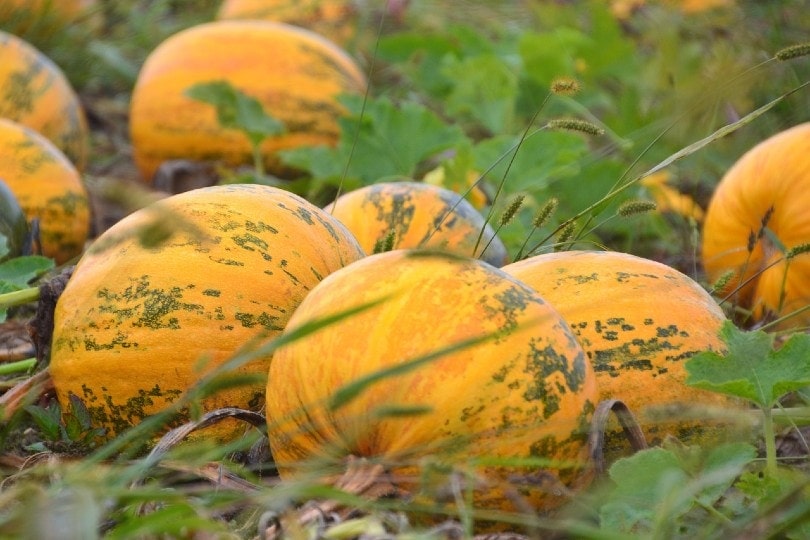
| USDA Hardiness Region | 3–10 |
| Sun | Full sun |
| Soil | Well-draining, organic matter |
Zucchini, summer squash, winter squash, and pumpkins fall under the squash category. These plants grow best in temperatures above 65°F. They can provide you with plenty of meals and healthy snacks.
Squash requires moist soil that is filled with organic matter, such as compost. Squash plants grow well with other vegetables, except for potatoes. At the end of the season, the remaining squash will have to be cleaned up to prevent pests.
- Grows well in a garden with other vegetables
- Abundant production
- Prone to insect pests and diseases
Plants That Are Poisonous to Your Dog
Now that you know which plants are resistant to dog urine, it’s important to know which plants are dangerous for your dog. Even if they look beautiful, some plants can make your dog sick. If you want to have these plants near your home, ensure they are in fenced-in areas or in hanging baskets where your dog cannot access them.
The ASPCA has a full list available of toxic plants to dogs. If you’re a dog owner, always check this list to ensure your pup stays safe before planting anything.
- Hemlock
- English Ivy
- Mistletoe
- Oleander
- Mushrooms
- Chrysanthemum
- All flower bulbs
- Lily of the Valley
- Foxglove
- Marijuana
- Rhubarb
- Tulips
- Virginia creeper
- Sago palm
- Wisteria
- Azalea
- Daffodil
- Peony
- Iris
- Mums
Conclusion
Having a dog doesn’t mean you must give up your dream of having plants around your home. With these dog pee-resistant options, you can build a lovely garden or landscape without worry. Remember always to check if the plant that you want to add to your yard is safe for dogs before you find that perfect spot for it. We hope you’ve found lovely dog urine-resistant species for your springtime planting!
Featured Image Credit: salofoto, Pixabay

